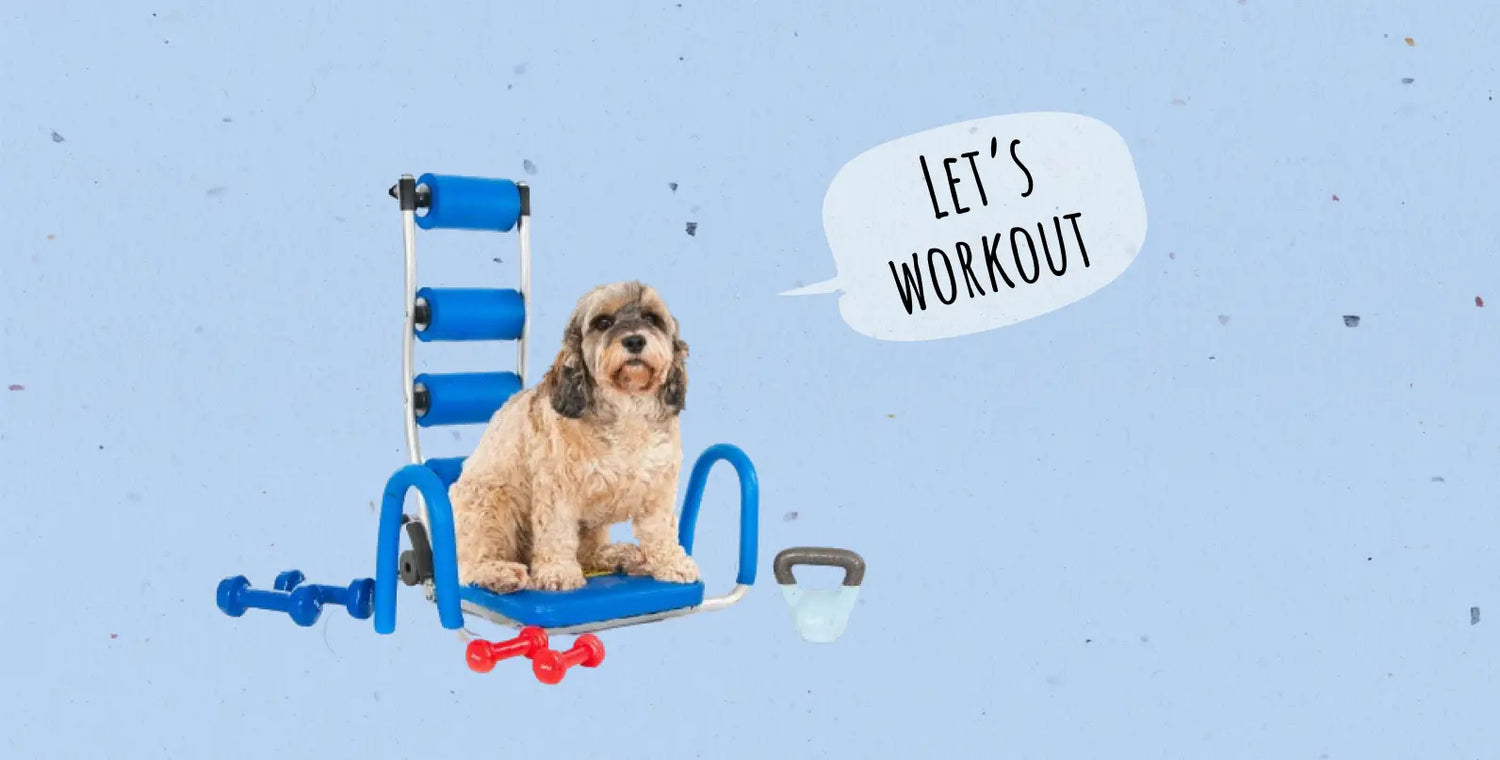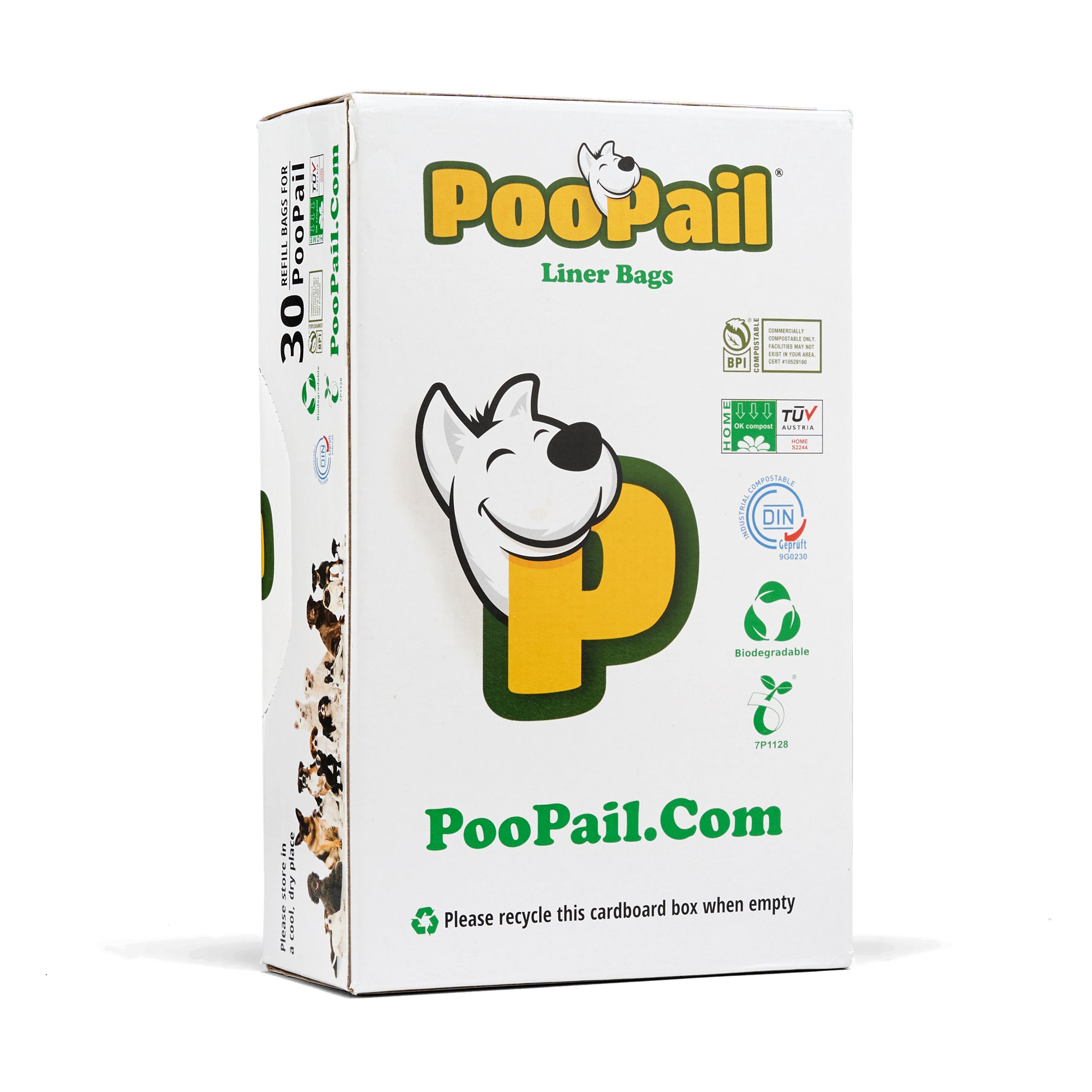It's hard to admit that your furry old friend isn't the athletic puppy it used to be. With aging comes mobility issues and joint discomfort; it's only natural. But that doesn't mean Fido won't need its daily dose of exercise anymore. A fair share of activities can keep it healthy in its golden years. The question is: what kind of exercise does your aging dog need? This article explores all you need to know about exercising senior dogs, including tailored tips for special cases.
Essentials of Exercising Senior Dogs
Be Mindful of Conditions
When exercising senior dogs, watch for the weather, as it can affect their comfort. Senior dogs are more sensitive to very high or very low temperatures, so go for exercise times when the weather is mild. If it's hot outside, aim for early morning or late evening so the weather is chilly for a walk. A doggie coat can come in handy if it's cold.
Be Aware of Surroundings
If old Fido has poor eyesight or hearing, sudden movements like motorcycles coming from nowhere can cause stress or anxiety. Look out for any distractions that might take your dog by surprise, and comfort it when you notice something. A safe environment like a quiet neighborhood or a pet-friendly park is best for a positive exercise experience.
Follow Your Dog's Pace
Always go at your four-legged friend's pace, and don't rush it during a walk or an exercise. If it lies down or refuses to fetch a toy, it's time to rest. Keep in mind that senior dogs don't have as much stamina. Watch for fatigue or heavy breathing signs, and adjust your pace accordingly.
Stick with Familiar Routes
Dogs with issues with their senses will need familiar routes or places for exercise. Familiar surroundings can make your dog feel more secure and prevent it from getting anxious. Go for routes that your furry old friend knows well. Recognizing all the scents and landmarks allows it to navigate the environment more comfortably.
Tailored Exercise Advice for Older Dogs
Exercise Tips for Dogs with Arthritis
If your senior pup has arthritis, you can still give it the stimulation it needs with a modified exercise routine. Replace challenging routines like running and fetching with mental activities. Exercising the brain can stimulate and exhaust the furry old friend just as much as physical movement. For example, some nose work and puzzle toys can go a long way. Also, just because your dog is old doesn't mean it can't learn new tricks. A bit of training can boost stimulation.
Another exercise for older dogs with arthritis is massage therapy. It's great for minimizing inflammation, boosting circulation, and soothing joint pain. Plus, your canine companion will enjoy every minute of it. Make sure to ask your vet for instructions on how to give your shih tzu a shiatsu.
Low-Impact Exercises for Dogs With Joint Concerns
Dogs are more likely to develop joint issues the older they get. But that should not stop them from getting the exercise they need.

That being said, here's how to exercise your senior dog if it has joint concerns:
- Scatter feeding: One way to stimulate your senior pup physically and mentally is by scatter feeding. Place healthy treats throughout the room or backyard, and let Fido sniff and find them. It encourages it to use its nose and move around for snacks, gently exercising the joints.
- Walking in Water: When your dogs walk in water, the buoyancy naturally removes the weight and makes it easier on the joints. At the same time, the water's resistance encourages the muscles to work a bit harder. Ensure the water's height is somewhere around your dog's elbow.
- Food Dispensers and Puzzles: Consider buying various food puzzles and dispensers - or make your own. Make sure to be generous with food when you first introduce the puzzle. Load them with your dog's regular kibble or treats, encouraging mental stimulation and physical activity as they work to retrieve the food. Keep in mind that Fido needs to enjoy the exercise. You can hide the food in a delivery box or a scrunched towel.
- Figure-8 Walking: Another gentle exercise for old dogs with joint issues is figure-8 walking. It involves placing two cones - or any substitutes you may have - on the floor and walking your dog around and across them in a figure-8 fashion. You can gradually start moving the objects close together as you go.
- Doggie Push-ups: Does your dog know simple commands like "sit" and "down"? If so, you can try an easy exercise that stimulates both body and mind. All you need to do is have your senior pooch go from sitting to down and then back to sitting - and so on. Let your furry old athlete take a short break after a few reps before going for round two.
Winter-Specific Exercise Tips for Senior Canines
Exercising senior dogs in winter can get tricky. And many dogs will think twice about going outside when it's raining or snowing. That leaves you with indoor activities. If the cold is not suitable for your pup's breed, there are many exercises it can do at home. Indoor exercises are also better for dogs with chronic or mobility issues like arthritis.
For example, you can set up an agility course with household props like chairs, pillows, and blankets and let Fido navigate. You can also play hide-and-seek by tossing a treat into a room and hiding somewhere else until your dog finds you.
Just because it's winter doesn't mean you can't go for outdoor exercise. If the weather is nice outside and your senior pup doesn't mind the snow, you can take the exercises outside. One idea is to grab a snow shovel and create a maze through deep snow in your backyard. Then, watch as your dog navigates the twists and turns. If your dog has short hair, you'll want to keep it warm outside with a doggie sweater and booties.
Exercises for Active Breeds
While many senior dogs will start dialing it down, some will refuse to take it easy. It is common in active breeds like Australian shepherds. But just because your old pup still likes to run and jump around doesn't mean it can do so safely. It can risk issues like joint damage.
If your dog doesn't show signs of slowing down, many low-impact exercises for old dogs can give you the physical stimulation it needs. These include swimming and slow, loose-leash walks. In this case, mental stimulation with puzzle games works, so combine both.
Tips for Senior Dogs That Haven't Exercised Much
If Fido happens to be a couch potato, you'll want to start with short bouts of exercise around four times a day. These can be short walks with plenty of rest. Consider increasing the weekly exercise by 10% if the dog doesn't seem too tired or distressed. Make sure to keep an eye out for soreness or stiffness, too. Including some toys in the exercise can also be a good idea.
Another good exercise for inactive dogs is swimming - if your pup likes to be in the water. It doesn't strain the joints much and can be more stimulating than a simple walk. And remember to make sure the water is clean and not too cold.
Health Considerations in Senior Dog Exercise
Strength and Endurance
Chances are your senior dog can't keep up with long hikes and fetch games like they used to. It's natural to have lower energy levels at this age. So, how much exercise does a senior dog need? The point is to keep them active instead of tiring them out. The key is moderation and consistency. Rather than an hour-long intense exercise session, go for shorter, more intense daily activities.
Joint Health
Joint discomfort is common among many senior canines. As the cartilage in joints slowly deteriorates, inflammation can result in pain and reduced mobility. Common signs include walking slowly or stiffly, avoiding stairs, and lack of interest in toys and activities. You'll want to begin each exercise session with a warm-up period if you notice these signs. Joint supplements recommended by your vet can also help.
Weight Management
We've already established that senior dogs tend to be more inactive. This inactivity can lead to a drop in metabolism - and, ultimately, weight gain. Maintaining a healthy weight reduces the risk of obesity-related health issues and prevents additional strain on those joints. Daily casual exercise can go a long way, but you'll want to complement it with a balanced, age-appropriate diet. Consider taking Fido for regular checkups to monitor its weight and adjust its diet and exercise routine.
Cardiovascular Wellness
Aging dogs can experience changes in the way their cardiovascular system works. While exercise certainly has benefits, tailoring the activities to your dog's fitness level is essential. Keep track of its breathing and ensure it doesn't tire during exercise. If the old pup has pre-existing heart conditions, consult a vet to figure out the exercise types or levels that are more suitable for it.
Cognitive Stimulation
Like humans, senior dogs are prone to cognitive decline as they age. You can slow this down as much as possible by combining exercise with mentally stimulating activities. It can include interactive games, puzzle toys, or even teaching new tricks. The key is to keep the mind engaged, which is just as important as physical activity. To ensure your dog has a good time, adjust the duration and intensity of the exercise according to its abilities—but more on that later.
Quantity of Exercise: Finding the Right Balance
Consult a Vet
Consult your vet before you decide on an exercise routine for your aging dog. They will evaluate your dog's health, identify any problems, and give you specific recommendations regarding the routine and how to exercise an old dog safely. It is essential if your dog has pre-existing health conditions like obesity or arthritis.
Account for Individual Needs
Every dog is unique - with various exercise needs. You'll want to consider factors like size, breed, and overall health. For example, Smaller breeds like Pomeranians have different needs than larger dogs like Rough Collies. And keep in mind that certain breeds are more prone to specific health issues.
Keep Track of Energy Levels
Pay attention to Fido's energy levels and adapt the exercise routine accordingly. While some senior pups may still be energetic and enjoy playing, others may prefer shorter, casual activities. Take regular time-outs during exercise to prevent exhaustion and ensure your old canine companion enjoys the session. Watch for your dog's response or any signs of discomfort as you go.
Keep It Short
Moderation is vital when exercising senior dogs. Long periods of high-impact activities can take their toll on the dog's joints and even worsen an existing health condition. Break the exercise into shorter sessions throughout the day to prevent overexerting. Remember to take it easy with the activities as well; your dog isn't the ball of energy it used to be.
Adapt as You Go
Your senior dog's exercise needs may change over time. Assess the exercise routine regularly and be ready to adapt according to any changes in Fido's health or mobility. A gradual warm-up before exercise and a cool-down afterward can also help greatly. It prepares the dog's joints and muscles for the activity. Cookie stretches for dogs can be a great warm-up.
Establishing a Senior Dog Daily Routine
Set Realistic Goals
You may be asking, "How much is too much exercise for a senior dog?" With that in mind, you'll want to set realistic goals for Fido. If it has been relatively inactive, start with modest goals - like a short walk around the block three to four times a day. A more active dog, on the other hand, won't mind taking it up a notch. Either way, the aim is to maintain a healthy weight, improve joint mobility, and prevent cognitive decline.
Create a Consistent Schedule
It's no surprise that dogs love routine, and a consistent schedule is crucial for senior dogs. It means setting a specific time for daily walks, playtime, and meals. Consistency helps your old pup look forward to exercise sessions. Sticking to the schedule is also essential for managing weight and keeping track of energy levels. With a senior dog's daily routine, you can monitor your old pup's behavior more quickly and notice any changes that can point toward health issues.
Mix It Up
You can't go wrong with a little variety when exercising senior dogs. While routine is essential, introducing various activities can keep your dog engaged. Try mixing up the types of exercises, like ending a short walk with a gentle game of fetch. It not only provides physical stimulation but is also great for mental well-being. Like humans, dogs can get bored with the same old activities day in and day out. Add new elements now and then to keep thighs interesting for Fido.
Include Mental Stimulation
We can't stress enough how crucial mental stimulation is for senior dogs, especially since they're prone to cognitive decline. Think about activities that engage their minds. These can be puzzle toys, scent games, or simple tricks. Remember that mental stimulation is as important as physical activity as it can delay cognitive aging. These enrichment activities for senior dogs can also be an excellent opportunity to reinforce the bond with your furry old friend. Plus, mental exercises can be just as exhausting as physical ones, so your dog is getting more out of the routine.
In Conclusion
A healthy dog is a happy dog. And a big part of keeping your pooch healthy is exercise. It applies to senior pups, too. Of course, aging dogs are not the same as younger ones and will need an exercise plan suitable for their fitness levels. A balanced and age-appropriate routine can go a long way - whether it's a casual walk or a backyard agility course. If done right, there's a lot to gain from exercising senior dogs.
Frequently Asked Questions
How Much Exercise Does an Old Dog Need?
Senior dogs need less exercise than their younger counterparts - with a focus on quality rather than quantity. The exact amount depends on various factors like breed and health conditions. But in general, aim for at least 30 minutes a day combined. If you're going for three exercise sessions daily, that's 10 minutes each.
What Can You Do If Your Old Dog Can't Walk?
If your senior dog can't walk or has trouble walking, contact the vet to understand the underlying issue. The vet may suggest a unique exercise plan involving gentle movements, physical therapy exercises, or aquatic activities like an aqua treadmill to work on muscle strength and joint flexibility.
How Much Exercise Is Too Much for a Senior Dog?
You may wonder, "Does my senior dog need more exercise?" or "How much is too much"? To put it simply, anything over one hour is excessive. Of course, this number can vary based on the dog's fitness level and health condition. Don't forget that too much exercise can lead to exhaustion and discomfort.













Leave a comment
This site is protected by reCAPTCHA and the Google Privacy Policy and Terms of Service apply.